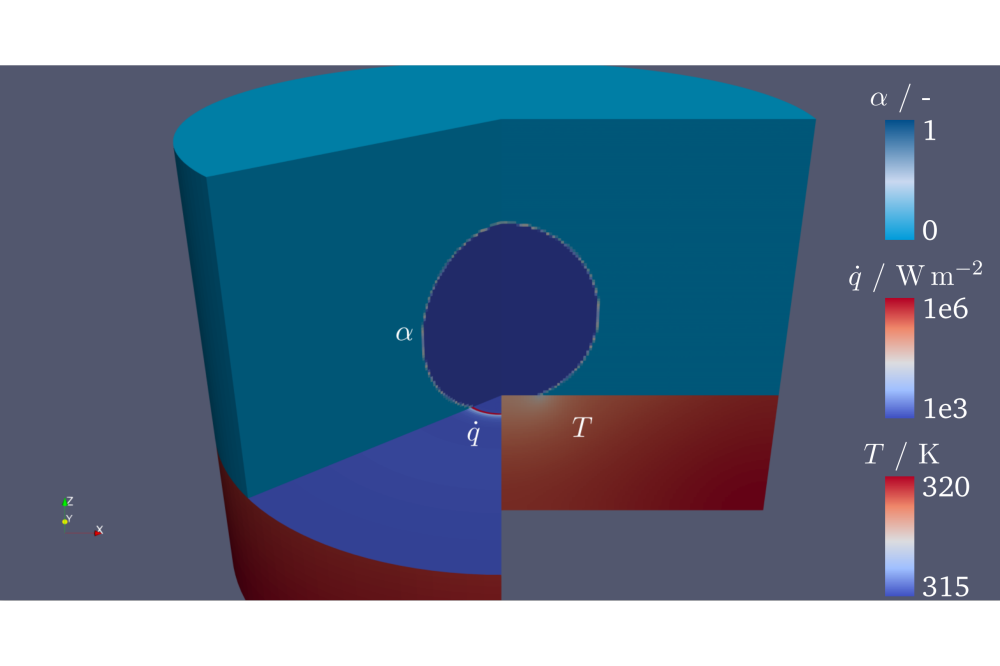RUBI (Reference Multiscale Boiling Investigation) Simulation
Einleitung
Due to its high efficiency nucleate boiling is a promising process for the cooling of electronic devices either for earth or space applications. For the design of cooling devices the characteristics of the heat transfer need to be known. One crucial quantity is the heat transfer coefficient from the solid wall into the fluid (liquid and/or vapor). Nearly all current correlations for the heat transfer coefficient suffer from two problems: They are mostly empirical and they are not valid for varying gravity conditions, as they mostly have been obtained under earth gravity conditions. The influence of gravity on local transport phenomena has to be understood in more detail. Therefore, detailed analyses of this process are carried out with numerical simulations, in addition/interplay with experiments. Nucleate boiling is a multiphase problem, because in the fluid region there is a liquid and a vapor phase. A common approach to multiphase problems is the Volume-of-Fluid method. However, it was found that with the default temperature boundary conditions for coupled patches between solid and fluid, the heat transfer is modeled in a highly non-physical way. Therefore, new methods were developed and tested.
Methoden
The simulations were performed with a customized solver in the OpenFOAM framework. This solver is capable of solving multi-region (solid and fluid), multiphase (liquid and vapor) and phase-change related problems. The multiphase framework is the Volume-of-Fluid method. Additionally, in the project phase new algorithms/methods for the heat transfer close to the contact line were developed and thoroughly tested. The numerical simulations of nucleate boiling are quite expensive in regards to computational effort. Additionally, parameter studies need to be performed. Therefore, a HPC is required.
Ergebnisse
For the development of the new temperature boundary condition three test cases were constructed, each with different aims. While the first two test cases are rather thought experiments and aimed for the (successful) comparison against analytically solvable heat transfer problems, the third one is closer to actual nucleate boiling and should give insight into the characteristics of the newly developed method. The growth of a single vapor bubble due to a superheated wall - temperature higher than the saturation temperature of the liquid - is simulated. The numerical simulation of nucleate boiling in general has many influential parameters, ranging from physical parameters such as temperature, pressure and densities to numerical parameters such cell size or specific coefficients, which need to be determined correctly. Therefore, the detailed analysis of the important parameters was conducted. More specifically, it had to ensured that the testing of one parameter did not influence many other, possibly crucial parameters. As already mentioned, this requires quite a lot of computational resources.
Diskussion
With the three test cases it could be shown, that the new implementation of a temperature boundary condition for multiphase problems yields physical results, in contrast to the default temperature boundary condition for multiphase problems. Additionally, in the researched cell sizes (smaller than 10 μm) it is mesh independent. Depending on the inclination of the interface close to the three-phase contact line the difference in heat transfer between the old and the new (and physical) temperature boundary condition is up to 300 %, i.e. the old temperature boundary condition underestimates the actual heat transfer by this margin. Consequently, only now reliable large-scale simulations of nucleate boiling in microgravity can be conducted.




